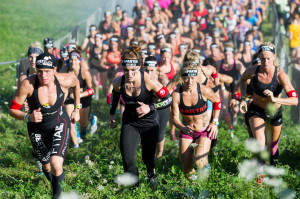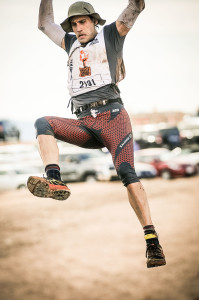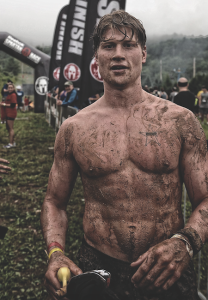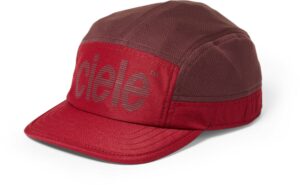Obstacle course racing: Running’s dirty little secret
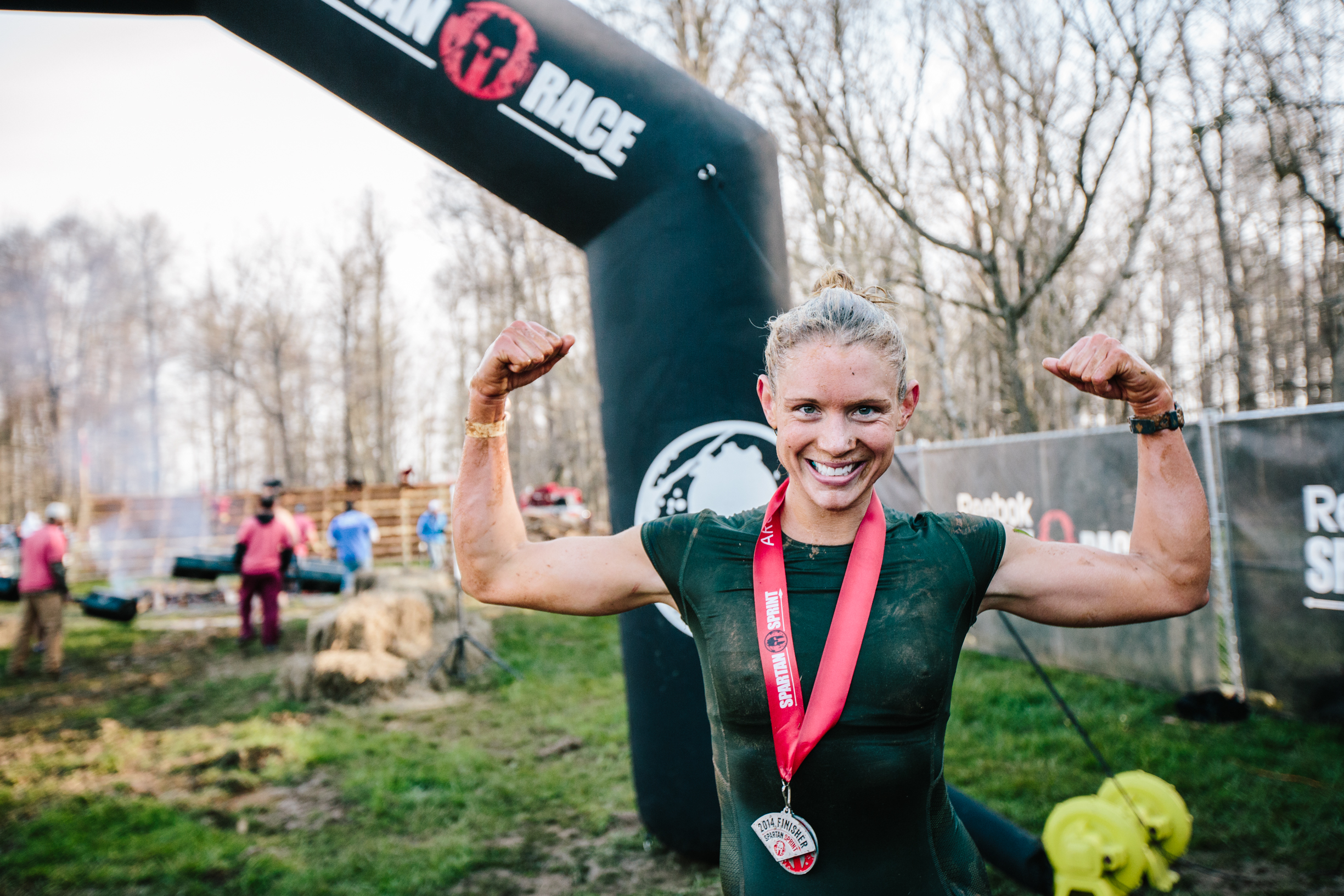
“Wow, he’s really slowing down” I thought, as I stared up the steep ski run at the leader of the Spartan Ultra Beast.
A quick glance at my GPS watch confirmed we were only 12K into the 50K race, so despite my very conservative start, I was about to take the lead, which was not part of my pre-race plan. Ten minutes and 150 metres later, I found myself surging past one of the muscly stars that Spartan brought in to contend for one of the biggest championship events in obstacle course racing (OCR). Obstacles aside, I realized in that moment that this is still a good-old-fashion footrace. I snaked through some beautiful single track at Killington ski resort in Vermont and kept my pace steady, sticking to my plan.
I maintained my lead on a scenic, but difficult race course until the final kilometres of the race. I was passed during my second time through “Bucket Brigade” – a brutal uphill carry of a gravel-filled five-gallon pail (you have to fill it yourself, and cannot spill a pebble during your loop otherwise you must do it again) on a steep uphill loop, where cramping legs and my T-Rex arms slowed my progress. Ironically, I was passed by the OCR star I thought blew up when I passed him on the first big climb. I’m sure it had something to do with maintaining balance in the OCR world. How could an ultra junkie and OCR newbie walk into the biggest weekend of racing in the Spartan world and come away with the crown in the longest, toughest race they offer?
I was finally drinking the cool-aid. After years of excuses, and denial that ocr was a sport worthy of my attention I cracked, and in the span of two months, had raced the two longest and toughest ocr events in North America – both the 50k Spartan Ultra Beast in Vermont and the World’s Toughest Mudder (WTM), a 24-hour OCR race at Lake Las Vegas. A funny thing happened, too: I really enjoyed myself.
History
OCR made its presence known in North America in the mid 2000s, growing in conjunction with the rise of CrossFit, and in some respects supplanting adventure racing, which had dominated the endurance landscape since the mid ’90s. Although its roots are in England, where an eccentric military veteran and road racing pioneer who goes by the name Mr. Mouse created a 12k obstacle course race that snakes through his 600-acre farm in 1987 in Perton, called Tough Guy. Popularity soared across the U.K. and quickly spread to Europe and North America, where series such as Tough Mudder, Spartan, Mud Hero, Warrior Dash and others have sprung up to lure a new type of athlete. Today, there are over 100 series across North America, with races ranging from minutes to days.
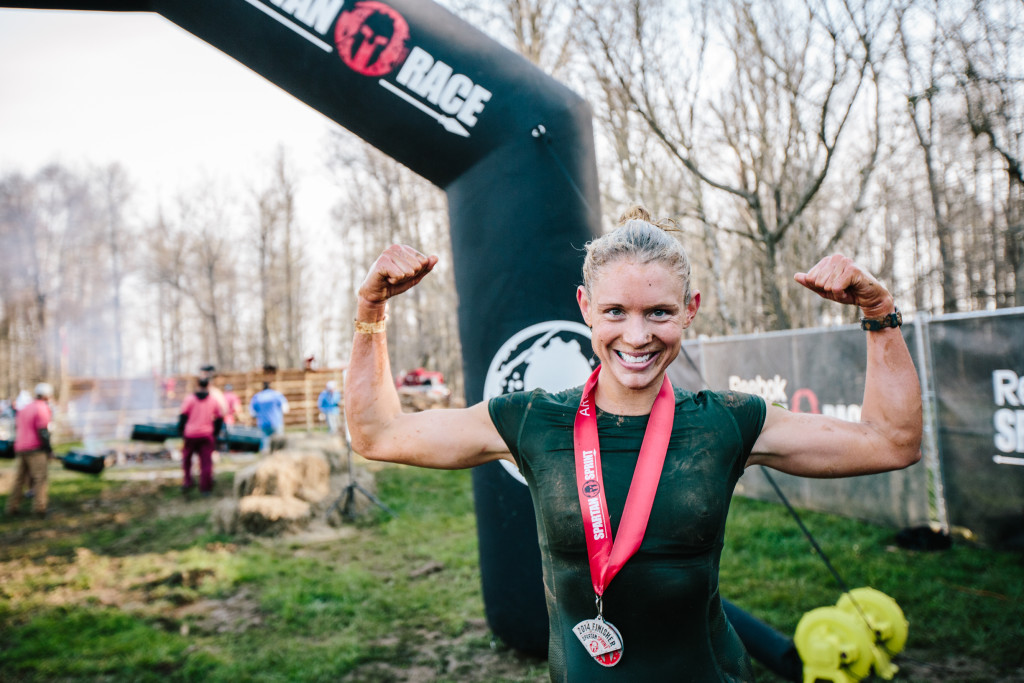
Current state of the game
With participation numbers in the thousands per events, big cash prizes and television coverage, it’s got momentum and an appeal that’s making everyone take notice – from the running purist to the CrossFit athlete.
The sport has also created a new group of stars – an amorphous group of individuals with various athletic backgrounds who have been dominant in these early years, have developed huge social media followings, and are reaping the rewards of being early adopters to this sport. Part of that reward, which captured the attention of many non-OCR elites in 2014, is the significant prize money currently in the sport. The dollars available for podium finishes blows the prizing from most ultras, trail and road running, cycling, and adventure races out of the water. For example, Warrior Dash paid out us$30,000 to both the male and female winners of their 5k series championship and drew some of North America’s best runners out of the woodwork, and in the process annihilating the stalwart OCR elites. The money and the titles went to Max King and Kimber Mattox – both elite runners – and now, when the price is right, OCR competitors.
In the other major race series, like Spartan, Battle Frog, and World’s Toughest Mudder, athletes skewed towards endurance over pure strength seem to have the edge, with Canadian biathlete Claude Godbout winning the 2014 Spartan Championships (and $15,000 for her efforts), and nationally ranked mountain bike racer Ryan Atkins of Ontario capturing the past two World’s Toughest Mudder titles (as well as finishing second in this year’s Spartan champs, thanks to a botched spear throw). The list goes on. Athletes with a background steeped in running, skiing, or cycling such as Canadians Marc-Andre Bedard and Helene Dumais or top Americans like John Yatzkow, Hobie Call, Cody Moat and Matt Novacak, are frequently snatching the top podium spots. Oh, and most of them also cherry-pick the races with the most prize money.
So now that the secret is out, many insiders are predicting big changes on the elite side of the ocr world. While the early days might have seen the podium topped by individuals who could do 100 push-ups and 50 pull-ups without blinking, the new generation of OCR athlete is shifting towards those with the stamina to run, and run fast, between the obstacles, and the proof is in the cham- pionship pudding.
Undoubtedly, the sport is getting faster, but as Godbout notes, we won’t see the change in speed at the local events necessarily, but at the championship events, when the big bucks are on the line, it will be the appearance of international athletes that will shake up the sport. Californian Hunter McIntyre, the poster boy of Spartan racing and possibly ocr in general, acknowledges that the elite field is “stacked now” on the men’s side, with world champions, and olympic athletes now toeing the line with these local and regional ocr stars. Like Godbout, he doesn’t see these top athletes supplanted by newcomers, and his recent win of the World’s Toughest Mudder’s team competition does support that. Perennial champion on the women’s side, Chicago-based attorney Amelia Boone has seen the elite field explode in the U.S., and notes that “it’s been a battle to try and stay at the top with new talent popping up at every race.”
What will affect this emerging talent pool is the type of race, as certain races are more run-centric than others. Max King, who bested second place at the Warrior Dash championship by over 1 minute on the 5k course finished a disappointing 12th at Spartan, failing many of the grip- and strength-based obstacles, and consequently having to do over 100 penalty burpees, which put him out of contention, despite the 25k length. What’s becoming clear is that, in today’s championships, failing obstacles will keep you off the podium, regardless of how fast you run between them.
Growing pains and the future of OCR
I feel confident in saying that OCR is here to stay. Currently seeing huge attendance, and a movement to push the sport towards the Olympics, it will only get bigger and more entrenched, much like triathlon in the 1990s. While I used to consider myself a running purist, after my WTM and Spartan experiences I don’t feel that participating in OCR changes this–these are still running races. In fact, Spartan elite Cassidy Walton describes the ideal body type as a runner “with some muscles.”
This rapidly growing sport is evolving quickly, due in part to competition between the major 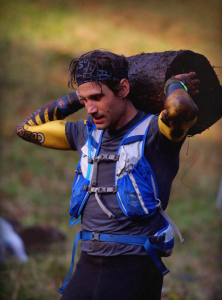 brands, as well as innovation by newcomers such as Battle Frog, which are helping to define the OCR landscape. Boone sees this young sport as being at “a bit of a crossroads,” with elites pushing for standardization to legitimize OCR – a move that could potentially jeopardize the massive participation, which is fuelling its meteoric growth. Amelia Boone entered OCR because of the lack of standardization, and the allure of the unknown. With several major race series pushing their visions forward, time will tell who wins out.
brands, as well as innovation by newcomers such as Battle Frog, which are helping to define the OCR landscape. Boone sees this young sport as being at “a bit of a crossroads,” with elites pushing for standardization to legitimize OCR – a move that could potentially jeopardize the massive participation, which is fuelling its meteoric growth. Amelia Boone entered OCR because of the lack of standardization, and the allure of the unknown. With several major race series pushing their visions forward, time will tell who wins out.
In many ways, the sport is playing catch-up with its success, and working through growing pains that have already been solved by other endurance sports. For example, allegations of cheating have been levelled by many inside the sport, and the absence of drug testing at the big money events needs to change if the sport is to become legitimate at, say, an Olympic level. Tough Mudder only times its athletes during its WTM championship (its regular Tough Mudder events do not rank participants), using strategically placed timing mats. Accusations of cheating are common in Spartan events. Suspicion of course-cutting has dogged this year’s ultra-beast champion, in part due to the organization’s inability to disprove this claim through split-time analysis. Tough Mudder aims to prevent cheating in its big money event through the use of numerous race personnel stationed throughout the course, RFID tags which are read at five strategic points on course, and a timing official who monitored the top ranked racers for timing irregularities which could indicate course cutting. But in events with thousands of competitors it will be tough to track all those Tough Mudders.
As the sport matures, it will need to better address these and other issues. For example, burpees are a sore spot for OCR racers as competitors often miscount or simply don’t execute them to form. I know that from my experience in the Spartan. My burpee form steadily decreased to the point where I looked like a 90-year-old with a bad back doing belly flops and micro hops as my failed obstacles mounted. Removing burpees and replacing them with no-fail obstacles or a timed penalty corral would remove this sore spot and ensure greater fairness and equality.
My experience in both races found that the obstacles were well constructed and safe (all things considered), but for both events I found the aid stations lacking, as they only offered water – no electrolytes and no food, which is a huge change coming from the buffet station world of ultrarunning. Issues such as line-ups at obstacles hampered progress for the elites in wtm, but wasn’t much of an issue in the Spartan Ultra-Beast, and politely letting these athletes know that you were in the hunt usually resulted in a parting of the sea, with numerous pats on the back and encouraging shouts.
With more races appearing annually, many involved in the sport are advocating that neutral governing bodies such as usora work with those in the industry to enforce stan- dards and regulate events. 2014 saw the first brand neutral world championship-style race (won by Jonathan Albon of England and Siri Englund of Sweden) which is seen by many as a step in the right direction. While a neutral body may help improve some races, they are unlikely to add much to the major race brands, which have essentially created the OCR category and rigorously test their obstacles, drive innovation, and serve as de facto industry leaders. Tough Mudder CEO Will Dean welcomes a neutral governing body that can work with the industry. “[It could] help ensure standards are set and that aspects of the events are regulated,” Dean acknowledges. “Although, I haven’t seen an example of this yet that has offered any value and improvement beyond what [we] already have in place.” Getting the likes of Tough Mudder on board will be key if there’s to be any unified body governing the current unorganized state of the OCR world.
 What’s right for you
What’s right for you
With numerous event options on the table, picking the right ocr for you is maybe even easier (and more fun) than deciding on what distance to run on the roads. Based on my experience, pick something best suited to how you train. I picked the two longest OCR events I could find – and did well in both (OK, I bailed 80k into the WTM) as they suited my strengths and allowed me to be an ultrarunner. For most of the races though, Atkins suggests that the ideal athlete is someone who can “run really fast in the 5–21k range, with a reasonably strong upper body, wicked grip strength and who doesn’t get injured easily.”
With races of all lengths, styles and competitiveness, there truly is something for everyone. If you just want to participate, and experience camaraderie that comes when participants aren’t ranked, then race a Tough Mudder. If you want to put your strength to the test, be competitive, and throw a spear or two, try a Spartan race. Otherwise, take a tour online and see what ocr events are local to you. I doubt you’ll be disappointed and, who knows, maybe you’ll fall in love with this wild spin on running and join one of the thousands of athletes who are running around in the mud, sporting a Tough Mudder logo tattooed somewhere on their body. If not, you can at least count yourself as one of the millions who participates in this dirty little secret each year.
